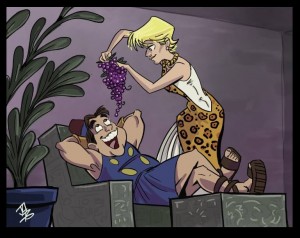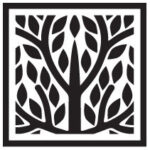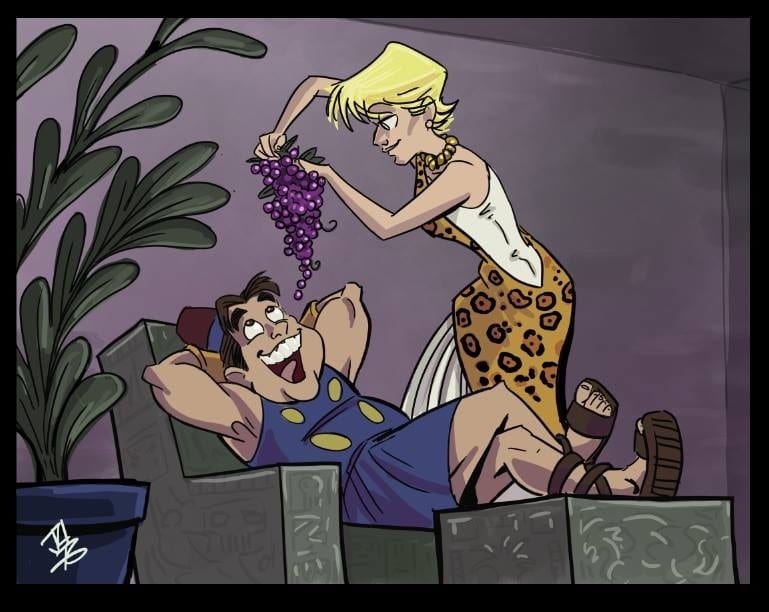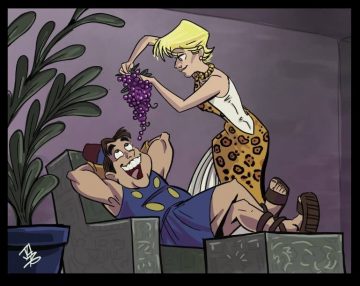 Why do we need the Book of Mormon?
Why do we need the Book of Mormon?
I would begin by asking the class the title of the lesson (all questions to ask the class are italicized from here on out; bold indicates a shift in topic).
Why do you think we need the Book of Mormon?
As I prepared this lesson, I remember reading the Book of Mormon as a Young Woman. It was hard because there were so few women in the Book of Mormon. I clung to the stories of Mary and Martha; Ruth and Naomi; Esther, Mary and others. There are very few stories about women in the Book of Mormon and those that are there aren’t always flattering.
Another issue I had is that because we believe the Bible to “be the word of God as far as it is translated correctly” (Article of Faith 1:8), I always felt like I could be more liberal in my interpretation. If there was a story that bothered me, I could explain it away. I felt like I couldn’t do that with the Book of Mormon.
Are there stories in the Book of Mormon that trouble you? Are there aspects of the Book of Mormon that bother you?
I think it is ok if we find this book difficult. By talking about what troubles us, we can learn and grow as individuals and as a community.
Why do we need another book of scripture?
One thing that has helped me have closer relationship with the Book of Mormon is to think of the prophecies of this book to come in the Bible.
I love the verses in Ezekiel 37:15–17 (have someone read these).
What do these verses mean to you?
Why would God need two books? Could it be that there are different things to learn from each book? What might they be?
Some possible answers:
1) In 2 Nephi 3:12 (have someone read this), we see that God intends for us to use the scriptures together to give us a clearer understanding of our purpose and by studying the Book of Mormon and the Bible, those books “shall grow together, unto the confounding of false doctrines and laying down of contentions, and establishing peace among the fruit of thy loins, and bringing them to the knowledge of their fathers in the latter days, and also to the knowledge of my covenants, saith the Lord.”
2) Ask two people to talk about their favorite movie. Explain how different stories speak to each of us differently. When God revealed the Book of Mormon to Joseph Smith and helped him translate, God gave all of us the opportunity to read God’s truths in different ways, providing us with more opportunities to have the Spirit touch our hearts and teach us.
3) We also have more opportunities to learn of Christ. Read 2 Nephi 25:23, 26 this scripture shows us that the Book of Mormon will help us learn more of Christ.
Why is that important? How does the Book of Mormon help us to learn more about Christ?
Conversely, I would say that the depiction of Christ in the BoM helps me to love the BoM more. How lucky are we to have more stories of Jesus?
I would ask two Young Women ahead of time to prepare to talk about a favorite story of Christ in the Bible and a favorite story of Christ in the Book of Mormon.
Learning to Love the Book of Mormon
I would start by having a guest speaker here. Invite a woman in your ward or stake (I would love to see a member of the stake Young Women’s president come) to give her testimony of the Book of Mormon and share a story or verse from the Book of Mormon that she loves.
I mentioned earlier that it is sometimes a struggle for me to love the Book of Mormon. Here are some ways things I’ve learned that help me.
Learning about the Women in the Book of Mormon
The Ensign in January 1992 had an article that I happened to read when I was a Young Woman that really helped me to feel more interested in studying the Book of Mormon, entitled, “Ordinary People in the Book of Mormon.” I was so excited to find this article because it meant so much to me when I was a 15-year-old girl feeling lost as I studied the scriptures. I wasn’t Nephi or Captain Moroni.
So, I clung to this part, “We may seldom refer to them in our lessons and talks, but the ordinary faithful people in the Book of Mormon can inspire and teach us as well as the prophets and leaders in that great book… The Book of Mormon contains great narrative depth, telling of ordinary people—people more caught in events than shaping them, people striving to be righteous when overpowering forces weigh against them, people whose social status may be akin to our own, although the experiences themselves may differ. As we learn to identify with these ordinary characters, we see our own struggles better in light of theirs. This view of ordinary people in the Book of Mormon may be especially valuable for women.” This quote spoke to exactly what I was feeling.
Recently, I have seen a few other pieces that talk about the women of the Book of Mormon that have strengthened my study of this book of scripture, and I like to think that really studying these stories of women in the Book of Mormon can plant a seed for a deeper love and appreciation of this book. The exegesis that Spunky did for this Gospel Doctrine lesson on Abish here is so beautiful. And, I so enjoyed Joe Spencer’s series for fMh in 2011 that you can see here.
Finding the verses that speak to your soul
I have found in my scripture study that the stories may not always resonate with me, but many of my most favorite verses can be found in the Book of Mormon. I have found these through daily scripture study, in Seminary and Sunday School, and by talking to others. (A quick easy place to find some favorites is by looking at the 25 scripture mastery verses for Seminary.)
Here are some of my favorites:
Moroni 7:47
Mosiah 18:8-11
2 Nephi 26:33
What are your favorites? Why?
Sometimes, we have to work to love things in the Church and we have to know that we can discuss our concerns with each other and with our leaders in order to better understand.
Optional: Being a convert
I think the Book of Mormon can also be a struggle when we are the only member in our family who is LDS or we, as a family, are new to the Church. I know I’ve served in Young Womens’ classes where this was the case. I think President Vicki F. Matsumori, a second counselor in the Primary presidency in 2007 gave an excellent talk on this in April 2007’s General Conference entitled, “A Lesson from the Book of Mormon.” Here’s my favorite excerpt from the talk…
A sister in Mexico City was 16 years old when the missionaries came to her door. She says that as they taught with the Spirit, “it seemed like they had taken the bandages off my eyes and that the Lord was clearing my understanding. … The word of God and my prayers strengthened [me] to overcome my next trial, to face my father. When I met rejection from my family because of my baptism, the Spirit of the Lord strengthened me by whispering: ‘Keep on. Go on. Some of your relatives will become members of the Church.’” 5
The scriptures, prayer, and making and keeping covenants have not only helped the people of Ammon but also first-generation members everywhere—including me. You see, while I was born of goodly parents, I was not taught the gospel at home. However, my parents did teach me moral values and ethical conduct. I remember my nonmember father helping me write the first talk I gave at church. The assigned topic was honesty, and instead of quoting the 13th article of faith, we used an example of a man whose nickname was Honest Abe.”
Are you the only member in your family? How do you include your family in your scripture study?
Testimony
I’m still developing the skill of likening the scriptures to myself when it comes to the Book of Mormon.* But, I do have a testimony that as we search the scriptures, we will learn and grow, and when we’re able to engage in honest discussion about parts of the scriptures that are troubling or that we don’t understand, we gain a deeper understanding of the Gospel and of each other.
End with testimony.
*It helps to have oneself depicted as a Nephite woman with an awesome leopard toga as you’ll see Jett Atwood did for me in the picture with this lesson. I couldn’t leave this lesson helps post without a plug for iPlates Vol 1 and 2. These graphic novels are a great way to encourage kids of all ages to look at the Book of Mormon in a new light.)
This lesson was originally written as a Young Women lesson in 2015.
Author’s note:
This lesson can be found here for Young Women and here for Young Men. I like to use both as I prepare my lessons because there are some great additional resources that can be found in the Young Men’s section.
Find other Young Women lessons for the month of April here.
You’ll have to scroll down a bit, but I believe the strongest part of this lesson begins at “Learning to Love the Book of Mormon.”







3 Responses
I have to admit, I initially parsed the title of this post as something like “April Young [Bennett’s] Lesson for Women.”
Good point! (And that would make it extra awesome 🙂 )
Yikes! The graphic of the woman cheerfully feeding the idle man some grapes. That is one of the most Mormon images I’ve ever seen. Lol